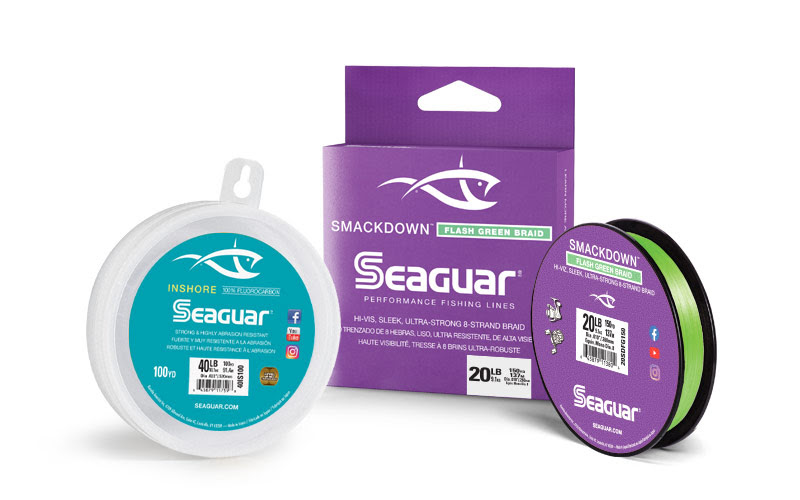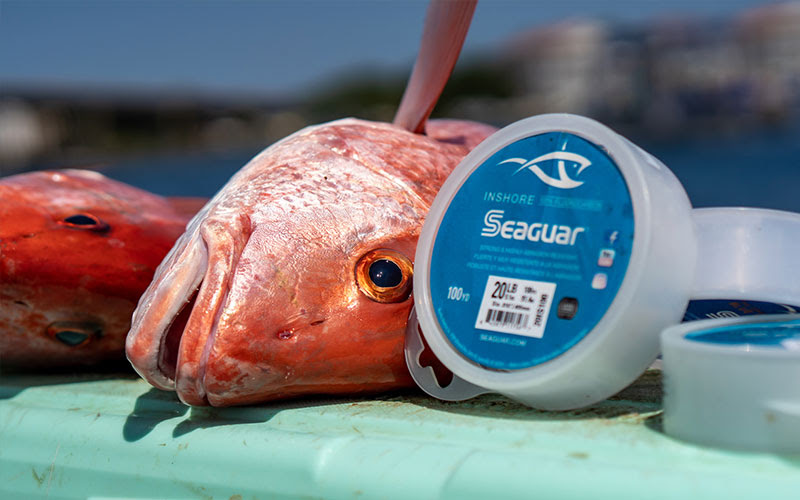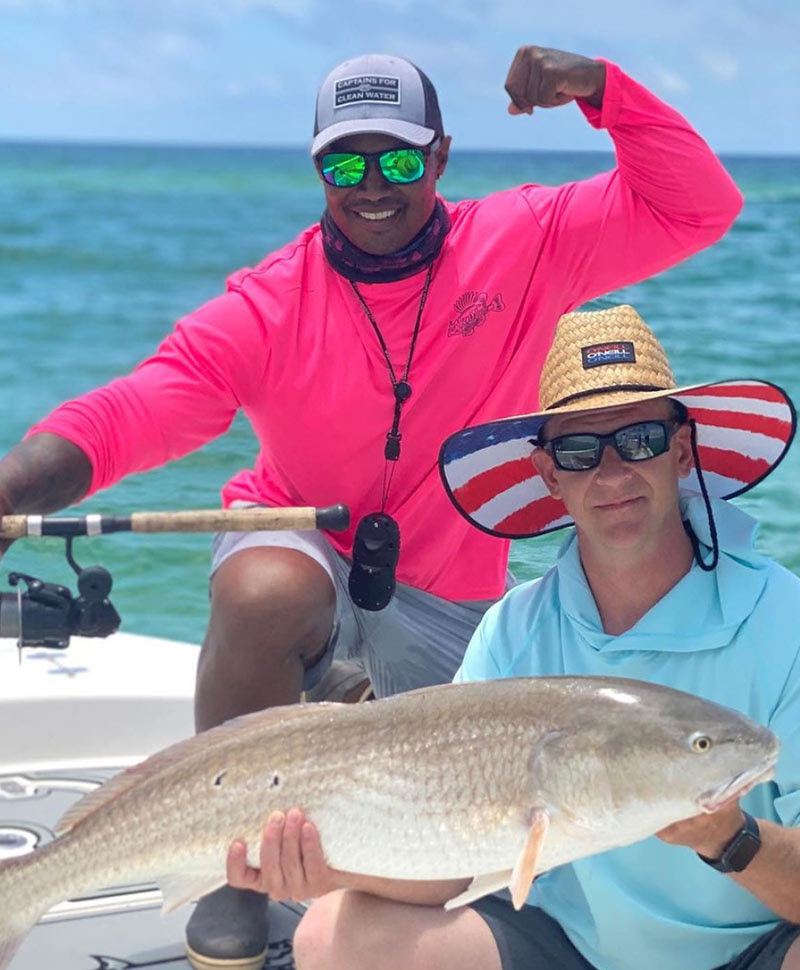There are many unique fisheries within the state, including the famed Florida Keys, Tampa Bay, Mosquito Lagoon, and more. Located on the state's Panhandle is another one, the Emerald Coast. This region includes Destin, Florida, an area known for white sandy beaches and extremely clear water.
Captain Lionel James of Lion's Tale Adventures has guided these waters for the past seven years and stays busy with up to six trips a week during the peak seasons. He's partial to the area as he makes his living on the unique fishery that gives him and his clients a diverse fishing experience in a beautiful setting.
A typical summer day for James and his clients usually entails heading to deeper water for red snapper and then transitioning shallow and fishing along the beach for redfish and tarpon. It is all part of a day in the life of an inshore angler on the Emerald Coast.
During the summer months, Capt. James can likely be found guiding clients as they cruise the beach searching for redfish and tarpon. They target them with different methods, including fly-fishing or sight casting bait to moving singles or pods of fish.
"Tarpon especially, are known for their great eyesight and that's what makes having a fluorocarbon line so important," says James. "The key is casting to them and letting them swim to the bait and find it, without them knowing you are there."
James will spool up a mainline of Seaguar Smackdown braided line paired with a leader of Seaguar Inshore fluorocarbon for both species. The size of each of those lines will vary based on what they are targeting.
For tarpon, he opts for a 30-pound Seaguar Smackdown braid with a leader of 40-pound Seaguar Inshore. It is generally lighter with a 15 or 20-pound Smackdown braid paired with a matching 20-pound leader of Inshore for reds.
"This time of year, they'll only be going one way, either east or west," says James. "You pick a direction and start riding the beaches looking for them. You will see some single fish, some pairs, and sometimes groups of three or four. They start to group up more later in the summer and into fall."
With this sight fishing approach, casting distance and accuracy are crucial as perfectly placing bait in front of a fish is essential to getting them to bite. Once he or his clients is hooked up, it is a battle to bring the fish to the boat.
Made from 100% custom Seaguar resins, Inshore offers incredible abrasion resistance with maximum impact and knot strength. It's faster-sinking and significantly less visible underwater than mono.
"Inshore also has a tiny bit of stretch, which is good because it has a little more flex and is more forgiving with huge fish," says James. "That's even more important when you are using pound tests that are lighter than the weight of the fish you are catching."
The same properties that make fluorocarbon so effective for inshore species make it work when fishing away from the beach. Capt. James and his clients target red snappers as often as they can and he has a unique way to target them — pulling the normally bottom-dwelling fish from the depths to just below the surface.
While his boat is sitting in depths between 65 and 85 feet of water, Capt. James will locate fish on his electronics and throw a five-pound box of Spanish sardines and wait for the magic to happen.
"You throw the sardines maybe 15 or 20-feet away from the boat and wait," he says. "They will come right up to the top, maybe two feet below the surface. That allows you to sight fish for them and makes for a really fun bite."
Capt. James will rig half of a Spanish Sardine and cast to the activity; his leader line of choice is 20 to 30-pound Seaguar Inshore Fluorocarbon.
The Emerald Coast is a unique setting for inshore anglers, but the principles of targeting redfish, tarpon, and red snapper remain the same no matter where they swim. During the summer months, sight-fishing is one of the best methods to catch fish, and fluorocarbon's invisibility is essential for the angler to remain undetected.
Seaguar Inshore is available in 100-yard spools and in 12, 15, 20, 25, 30, 40, 50, 60 and 80 lb. test, with MSRP $15.99 to $58.99. Tie on an Inshore leader during your next trip to where the land meets the sea, and you'll quickly appreciate why Seaguar Inshore is Always the Best!
Copyright © 2013-2025 WesternBass.com ®








 Advertising
Advertising